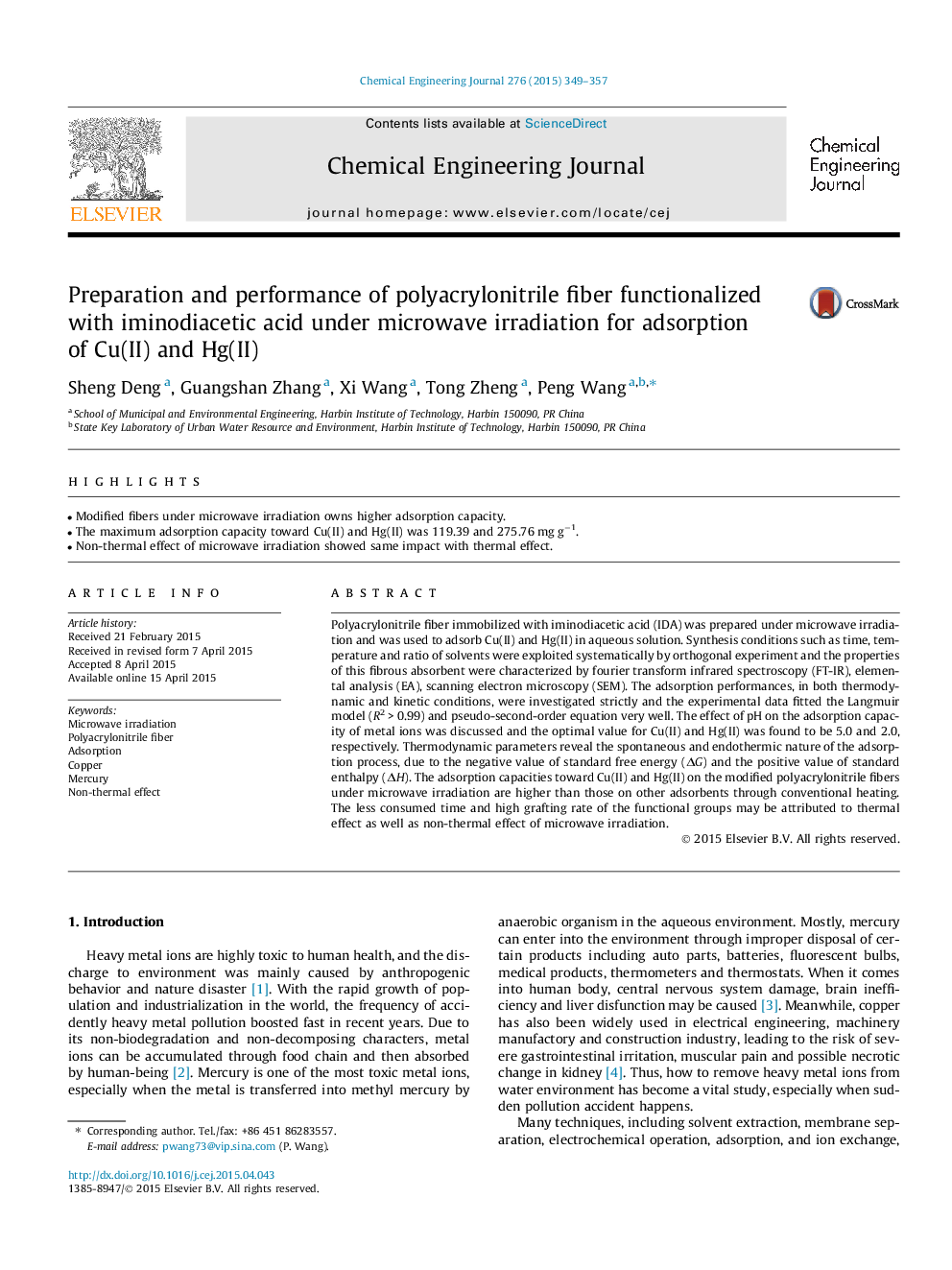| Article ID | Journal | Published Year | Pages | File Type |
|---|---|---|---|---|
| 146239 | Chemical Engineering Journal | 2015 | 9 Pages |
•Modified fibers under microwave irradiation owns higher adsorption capacity.•The maximum adsorption capacity toward Cu(II) and Hg(II) was 119.39 and 275.76 mg g−1.•Non-thermal effect of microwave irradiation showed same impact with thermal effect.
Polyacrylonitrile fiber immobilized with iminodiacetic acid (IDA) was prepared under microwave irradiation and was used to adsorb Cu(II) and Hg(II) in aqueous solution. Synthesis conditions such as time, temperature and ratio of solvents were exploited systematically by orthogonal experiment and the properties of this fibrous absorbent were characterized by fourier transform infrared spectroscopy (FT-IR), elemental analysis (EA), scanning electron microscopy (SEM). The adsorption performances, in both thermodynamic and kinetic conditions, were investigated strictly and the experimental data fitted the Langmuir model (R2 > 0.99) and pseudo-second-order equation very well. The effect of pH on the adsorption capacity of metal ions was discussed and the optimal value for Cu(II) and Hg(II) was found to be 5.0 and 2.0, respectively. Thermodynamic parameters reveal the spontaneous and endothermic nature of the adsorption process, due to the negative value of standard free energy (ΔG) and the positive value of standard enthalpy (ΔH). The adsorption capacities toward Cu(II) and Hg(II) on the modified polyacrylonitrile fibers under microwave irradiation are higher than those on other adsorbents through conventional heating. The less consumed time and high grafting rate of the functional groups may be attributed to thermal effect as well as non-thermal effect of microwave irradiation.
